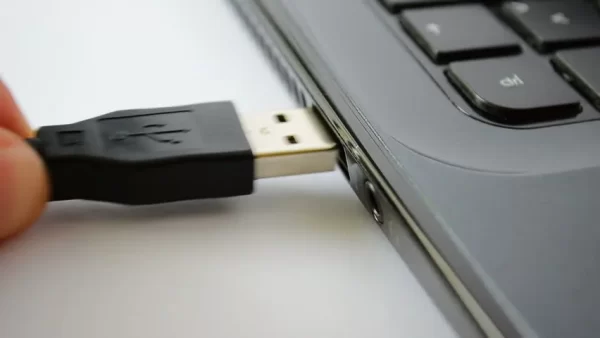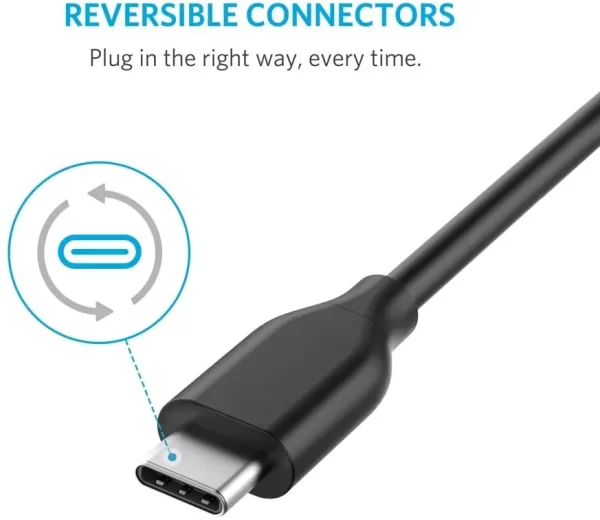
The Proper Way to Plug in a USB Cable Every Time
Although it may appear to be a simple task, correctly plugging in a USB cable can be challenging due to the wide variety of USB connection types and orientations. If a USB cable is inserted into a device’s port in the wrong way, the cable and the port could be damaged. This post will show you, step-by-step, the proper way to plug in a USB cable so that you never have any of these problems again.
Step 1: Identify the USB Connector Type
The first and most important thing to do is figure out what kind of USB connector you’re using. The different types of USB connectors include the A, B, C, and Micro varieties. It’s important to identify the model you have because they all look somewhat different.
Step 2: Examine the USB Cable
Check the USB cable thoroughly. Some cables feature labels or markings that specify which end to be inserted into the device. Check the cable for any indications on how it should be plugged in.
Step 3: Ensure Proper Alignment
It’s important to check the USB cable’s alignment with the device’s port before attempting to plug it in. There shouldn’t be any difficulty inserting the connector into the port. Do not force it if it does not fit snugly. Look at the alignment again.
Step 4: Check for Reversible Connectors

You can plug a USB-C cable in either direction because USB-C connectors are reversible. While USB Type-C ports are more forgiving, it is still best practice to align the connectors so that they don’t wear the port out prematurely.
Step 5: Observe Port Labels
Check your device’s port. Small icons or labels adjacent to the port on some devices show which way the USB cable should be inserted. These labels typically have an arrow next to the USB symbol to indicate the way the plug should be inserted.
Step 6: Use Adequate Lighting
When inserting the USB cord, make sure there is adequate lighting. The likelihood of a mismatch between the connector and the port decreases when working in well-lit conditions.
Step 7: Take Your Time
It’s probably most important to take your time while connecting a USB cord. Even if you’re in a pinch, it’s worth it to take the time to make sure the cable is oriented properly before you connect it.
Conclusion
Knowing how to properly insert a USB cable into a gadget or a charging port is a basic but necessary ability. By adhering to these guidelines, you can reliably put a USB cable into any connector, in any orientation. Taking the time to make sure the wire is oriented correctly will save you headaches and keep your gadgets working for years to come.
Frequently Asked Questions (FAQs) related to “The Proper Way to Plug in a USB Cable Every Time”;
1. Why is it important to plug in a USB cable correctly?
- Plugging in a USB cable correctly is essential to prevent damage to both the cable and the device’s port. Incorrect insertion can lead to bent pins, loose connections, and other issues.
2. How can I identify the type of USB connector I’m working with?
- USB connectors come in various shapes and sizes. You can identify the type by examining the connector’s physical characteristics, such as the shape of the plug and the number of pins.
3. Are all USB connectors reversible?
- No, not all USB connectors are reversible. USB-C connectors are known for their reversibility, but USB-A, USB-B, and Micro USB connectors have a specific orientation for insertion.
4. What should I do if I encounter resistance when plugging in a USB cable?
- If you encounter resistance when inserting a USB cable, do not force it. Recheck the alignment of the connector with the port, ensuring it’s correctly oriented.
5. Are there any tools or accessories that can help with correct USB cable insertion?
- Some USB cables are designed with reversible connectors, making it easier to plug them in correctly. Additionally, there are magnetic USB adapters that can simplify the connection process.
6. Can incorrect USB cable insertion damage my device’s port?
- Yes, incorrect insertion can potentially damage your device’s port over time. This can result in a loose or non-functional connection, which may require costly repairs.
7. Is it possible to repair a damaged USB port on a device?
- Repairing a damaged USB port can be challenging and may require professional assistance. Prevention through correct cable insertion is the best way to avoid port damage.
8. Do all devices have labels or icons next to the USB port to indicate the correct orientation?
- No, not all devices have labels or icons next to the USB port. However, many newer devices include visual cues to help users identify the correct orientation.
9. Can I use the same USB cable for different devices with different connector types?
- It depends on the compatibility of the cable and the devices. Some cables have different connector types on each end, making them versatile for various devices. Others may require adapters to connect to different ports.
10. How can I protect my USB cables from wear and tear?
- To extend the lifespan of your USB cables, avoid excessive bending or pulling, unplug them gently, and store them properly when not in use. You can also use cable organizers and protective sleeves.
These FAQs provide answers to common questions regarding the correct insertion of USB cables. Ensuring proper alignment when plugging in USB cables is a simple yet essential practice to maintain the integrity of your devices and cables.

Leave a Reply